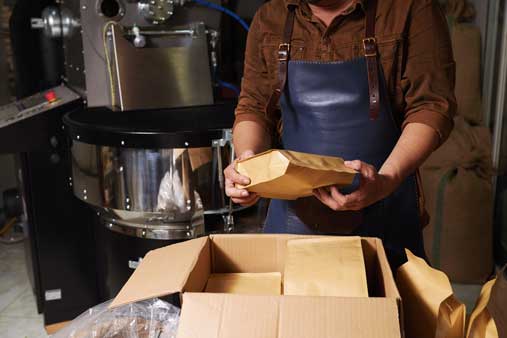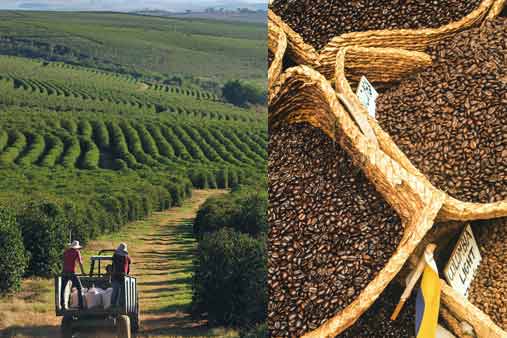How to Source Coffee From Mexico
The story of coffee production in Mexico is long and tumultuous. Despite riding the currents of an ever-changing market, this country managed to bounce back and produce delicious, high-quality coffees with certifications rarely found in other coffee-producing countries.
Recommended: Read our full, in-depth How to Start a Coffee Shop Business guides, inspired by coffee professionals, they will help make your coffee dreams real, from sourcing beans to hiring baristas, choosing the best POS system, forming an actual company, and everything in between.

A History of Mexican Coffee
Coffee — first introduced to Mexico by Spanish settlers in the 1700s — for many years grew solely under the supervision of a small group of landowners who held a monopoly over its production in the country. Eventually, Mexico became the main supplier of Arabica beans to the United States and established itself as one of the world’s top coffee-producing countries.
Revolution, Reform, and Reorganization
While large estates originally dominated the industry, the Mexican Revolution in the early 20th century helped spread the profession to smaller farms as a result of land reforms.
Following the establishment of the National Coffee Institute of Mexico in the 1970s, Mexico soon became the fourth-largest coffee producer in the world. Several events, however, derailed this growth, including a damaging outbreak of coffee leaf rust and a lack of funding from the Mexican government as a result of price controls set by the International Coffee Organization.
Without a government safety net and the financial backing to endure price volatility and rising overhead costs, many small coffee farmers had to shut down production.
The National Coffee Institute of Mexico unraveled shortly thereafter, but this powerhouse of a coffee-producing country still pumps out a large volume of quality coffee beans. This stems from Mexican coffee growers’ ability to independently organize themselves into co-ops without governmental help, allowing farmers to continue exporting with moderate ease.
Mexican producers also worked to gain certifications known to increase the value of their coffee, including organic, fair trade, Rainforest Alliance, and UTZ certifications.
Mexican Coffee in the Present Day
Today, Mexican coffee production is on the rise once again as its experienced small farmers leverage their skills to increase the country’s export volume. In fact, about 70% of Mexico’s coffee production happens on small farms, which number more than 500,000. Mexican coffee growers also produce multiple crops — like fruit, sugar cane, and beans — to supplement their income.
Mexican Coffee Production
Mexico currently produces between 2 million and 4 million bags of coffee beans each year, earning its place among the world’s top coffee-producing countries. With a typically mild flavor, Mexican coffee beans often form the base of many commercial blends. However, such commercial use also helped regenerate overall demand for a variety of Mexican coffee exports.
The country’s main coffee-producing regions now also grow high-quality coffees thanks to their volcanic soil and dependable rainfall. These regions account for 95% of Mexico’s coffee production, and many growers hold organic and fair trade certifications that increase the value of their product.
Almost all Mexican coffee producers use the washed processing format with many picking and processing their beans by hand to ensure they sell the highest-quality coffee cherries.
Regional Production
Here’s a guide to the key characteristics found in Mexico’s four main coffee-growing regions:
Veracruz
-
Flavor Profile: Since its introduction in the 18th century, coffee remains one of the region’s most important exports. Located on the gulf side of Mexico’s central mountain range, the region features two different coffee-producing areas: lowland and mountainous.
While its lowland coffees often have an unremarkable flavor profile, the region’s mountainous coffees include the sought-after Altura Coatepec beans. Named after the town of Coatepec, Altura Coatepec coffee has a reputation for nutty, bright, and chocolatey tasting notes.
- Processing Format: Washed
- Average Harvest Season: November to March
Puebla
-
Flavor Profile: Located to the left of Mexico City, this region has the lowest production volume of the country’s four main coffee-growing regions. Its farmers grow their coffee roughly 600 meters above sea level. This elevation produces coffee with a light-bodied, balanced flavor profile.
- Processing Format: Washed
- Average Harvest Season: November to March
Oaxaca
-
Flavor Profile: In the southern state of Oaxaca, small, family farms grow coffee on the slopes of Mexico’s central mountains. This region’s coffee has a reputation for a light body and low acidity. Oaxaca’s high elevation also produces a sweet, nutrient-rich coffee bean with a complex flavor.
- Processing Format: Primarily washed with some farmers occasionally using the natural process.
- Average Harvest Season: November to March
Chiapas
-
Flavor Profile: This region’s nutrient-dense volcanic soil and hot, tropical climate make it an ideal location for growing coffee. Grown at high altitude, its Altura coffee plants mature slowly to create high-quality beans. The flavor profile for this region’s coffee includes a delicate taste with low acidity and a medium body.
- Processing Format: Primarily washed with some farmers occasionally using the natural process
- Average Harvest Season: November to March
Coffee Farm Production
Here’s a summary of several popular farms in Mexico that grow high-quality coffee for export directly to a roaster or for sale through a broker or importer. While we don’t work with these producers directly, these examples offer insights into the common practices of farms in this country.
Finca Consolapan
-
Known by many as the best coffee-producing farm in the Veracruz region, Finca Consolapan earned more than 22 awards for its unique and delicious coffee. However, due to financial difficulties common among many small coffee producers, this farm also grows beans and sugar cane to make ends meet.
- This farm selectively picks and sorts its coffee by hand to ensure it processes only the best coffee cherries.
Finca La Puebla
-
Only 139 miles west of Mexico City, this farm planted its first Arabica coffee plant in the 1980s. Since then, the coffee grown on this farm boasts both Rainforest Alliance and UTZ certifications.
- Workers handpick the farm’s coffee and then process it on the premises.
Trebolillos
-
This family-owned farm in the Veracruz region dates back to the 1800s.
- In 2011, this farm committed to a mini-lot planting format in order to produce several lots of organic coffee that ultimately won the prestigious Cup of Excellence award in 2015. The farm then committed to adopting fully organic growing practices.
- This farm’s coffee boasts a reputation for a clean flavor profile with medium acidity and tasting notes of milk chocolate and papaya.
Productores Mixes-Zapotecos Sociedad de Producción Rural de Responsabilidad Ilimitada (Promizap)
-
While technically not a single farm, this organization of Oaxaca coffee producers came together in 2002 to advocate for its members, negotiate pricing, and create an easier path to international distribution for their product.
- The organization encompasses more than 3,000 people from 25 towns within the Oaxaca region. It collects coffee in its parchment state from producers, aiding in its sale, and provides education to interested parties.
- Farmer members also receive access to a nursery of healthy plants as well as organic fertilizer — an important factor in an origin known for its organic coffee production.
Notes on Importing Mexican Coffee
Whether you source Mexican coffee directly from a farm or through a broker or importer, you’ll most likely support the work and aspirations of a small producer. In addition, sourcing beans with organic, fair trade, UTZ, and/or Rainforest Alliance certifications — common among Mexican-grown coffee — can help you boost sales so everyone wins.
Check out our wholesale coffee sourcing guide which includes information about regions, processing, and buying directly from coffee farmers.


